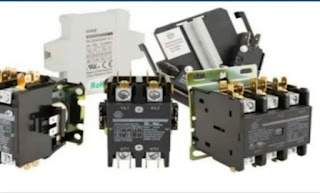Inside an Electrical Control Panel -What's All That Stuff?
Inside an Electrical Control Panel – What’s All That Stuff?🤔
Ever opened an electrical control panel and thought, “Wow, this looks complicated!”?👀 You’re not alone. But once you break it down, it’s like a big puzzle where every piece has a purpose.Let's have a comprehensive look at the key components commonly found in control panels.
Relay and Control Panel Wiring
The foundation of efficient panel wiring lies in careful layout planning. When designing a panel:👷
Layout Marking: Marking ensures proper positioning of control accessories like contactors, relays, and terminals.
DIN Rails and Raceways: DIN rails (zinc-plated metal rails) are used to mount components securely without screws, while raceways (PVC channels) carry cables and maintain a tidy setup.
Component Mounting: Use DIN rails to support components, leaving spacing (100mm for 415V systems) to ease maintenance.
Cable Management: Use U-loops, grommets, and cable sleeves to guide wires and prevent wear at hinges or junctions.
Control Elements and Their Purpose
1. Isolating Switch : Manually disconnects the electrical circuit from the power source for maintenance or safety.
2. Miniature Circuit Breaker - MCB: Automatically disconnects a circuit when current exceeds safe limits.
3. Contactor : Electrically controlled switch used to manage high-power circuits like motors.
4. Electromechanical Relay : Uses a magnetic field to switch circuits, often used in automation.
5. Thermal Overload Relay : Protects motors by breaking the circuit during overheating.
6. Timers : Delay relays that switch circuits on/off after a pre-set time.
7. Limit Switch : Mechanically triggered switch
Wiring Accessories You Should Know
1. PVC Channel : Provides neat wire routing inside panels.
2. DIN Rail : Standard mounting rail for electrical devices.
3. G Channel : Used for specific component mounts without screws.
4. Cable Binding Straps : PVC belts with holes for bundling cables.
5. Nylon Cable Ties : Fasten and organize wires.
6. Grommets : Protect cables passing through sharp-edged holes.
7. Sleeves:Flexible, tubular insulators for wires or cables.Provide electrical insulation and help identify wires.Protect against abrasion, heat, chemicals, and physical damage.Made from materials like carbon fiber, Teflon, fiberglass, nylon, PET, and metal.
8. Lugs and Thimbles:Metal connectors (usually aluminum, copper, or brass) used at cable ends.Ensure secure electrical connections to Terminals come in different shapes (ring, U-shape, etc.).
Wiring a Three-Phase Motor Control Circuit
A typical application of control panels is the operation of three-phase induction motors. Such configurations include:
Power Circuit: Consisting of the MCB, contactor, and overload relay—responsible for supplying and protecting the motor.
Control Circuit: Comprising push buttons, auxiliary contacts, and timers—used to control the operation logic.
Relay Ladder Logic (RLL)-The Electrician’s Secret Language
RLL is the primary language used in PLC (Programmable Logic Controller) programming. It visually represents the control logic with switches (contacts) and coils (outputs), resembling electrical ladder rungs. It's essential for troubleshooting and designing automated control systems.
Conclusion 🙏
Wiring a control panel isn’t just about connecting wires – it’s about doing it neatly, logically, and safely. Take your time, plan your layout, and you’ll feel super proud when you flip that switch and everything works just right.
So next time you look inside a panel, remember – it’s not magic, just smart engineering!
















THANK YOU
ReplyDelete